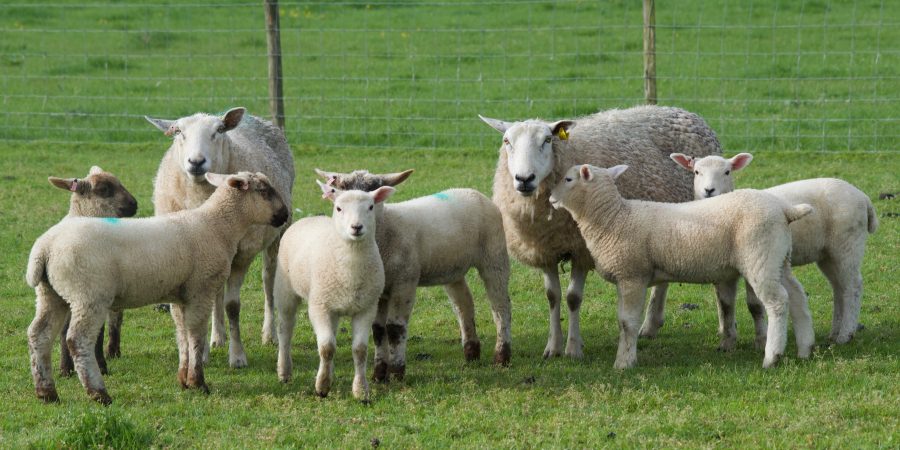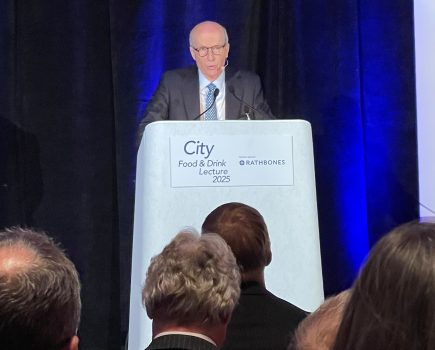This is the time of year when one is confronted with just how quickly the calendar moves on around us, and of the cyclical nature of sheep production. Even in the South East corner of the country, we are at the point when some flocks are just getting themselves sorted in the aftermath of lambing and getting lambs going at grass, while others are considering weaning. The latter is considered to be the end of one production year, inevitably signaling the start of the next; a time when once ewes have dried off after weaning we start the process of making up and preparing the flock for tupping and next year’s lambing. It’s quite a daunting prospect to consider that a lot of what we do with our ewes over the summer months will determine the flock lambing performance in 2025.
We all go through the routine stuff, assessing the suitability of ewes for future breeding, selecting culls, sorting replacements, body condition scoring etc., but how much thought do we give to the quality of the individual ewes in our breeding flock? For the commercial producer running a flock of hybrid ewes, Mules etc., there is little control apart from buying the best available (within budget), but purchases will be made on the basis of very limited criteria, largely visual assessment plus, possibly, buying from a known and trusted breeder.
For self-replacing flocks, a growing trend due to the significant advantages that accrue in terms of higher health status and the like, there is an enormous opportunity to exercise a greater degree of control over replacement quality and, in the longer term, flock performance. It is a process that does require a bit of thought, planning and recording. It is not particularly onerous but is a rather more efficient and effective approach than simply picking out the best looking, biggest etc. from a group of home reared shearlings. The use of purely subjective criteria certainly does not afford any meaningful assessment of future performance.
There will generally, although sadly not always, be considerable attention and time devoted to sourcing and selecting or purchasing rams for the flock, but not the same level of consideration to the ewes, something that, in my view, does a great injustice to what is the essence of any flock and certainly of a self-replacing ewe flock. It is the ewes that provide the continuity. Rams come and go, but many purebred and pedigree flocks will have ewe lines that go back for generations; they are lines that have been bred for a particular environment and production system and which should provide the consistency. All we need to be able to do is identify reasonably objectively the best performers with some degree of accuracy.
Regardless of whether our ewes are pedigree, pure-bred or home-reared commercial crossbreds, we all have ready access to the resources required to make more effective selection decisions. We are all obliged to identify our ewes, so why not make use of it? It is relatively simple process linking lambs to ewes; at lambing time we all know which lambs belong to which ewe by the simple expedient of tagging lambs at or soon after birth, so we can generate a link that will last for their lifetime and one that enables us to link objective measurements of the dam to her progeny.
Collecting some fairly basic data can provide a useful indication of what a ewe lamb is able to inherit from her mum and indication of her potential future performance; in general, the best ewes are likely to pass on the genetics required to produce the best replacements, although as with all things sheep, this is not guaranteed.
By simply weighing lambs at or soon after birth, we have a starting point; people will say that they don’t have time at lambing, but this is a nonsense; including weighing (and recording) into routine lambing treatments adds a matter of seconds per lamb and only requires a set of handheld weigh scales and a bucket. I have always weighed lambs as they are walked up to the mothering pens; weigh, dip navels, into the pen with mum and record weights. By weighing the largest and ram lambs first it is relatively easy to ensure that weights can then be related to tags.
Once in possession of a start weight, subsequent weight recordings may be used to measure growth rates; done within the first eight to ten weeks of life, this also provides a useful indication of mum’s genetic capacity for milk production. So with two weight records we have an indication of the lamb’s early growth potential and of the ewe’s milking and rearing ability; this is something that can easily be ranked by simply looking at total litter weight (singles, twins etc.) reared to eight weeks as a percentage of the ewe’s body weight at weaning. This, together with lambing scores, ewe health records etc. will contribute to meaningful and objective criteria to aid in the selection of better quality replacements. The biggest and the best looking are not always the ideal replacements; often it’s the contrary – singles, for example, are likely to be the biggest, even at 15 to 18 months.
OK, it all takes time, but for the smaller flock it can easily be done manually and for the larger flock, if applied in conjunction with a good flock management programme and the use of electronic weighing and record systems, is even less onerous; it is time that should be regarded as an investment in future flock quality and performance. Better quality replacements generally provide for a better performing flock through improved output, reduced times to finishing, longer flock life, reduced replacement costs, reduced ewe depreciation and lower vet’s bills, all of which should contribute significantly to an enhanced bottom line, simply by giving a little more thought to our ewes.







